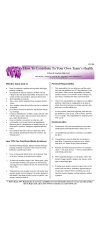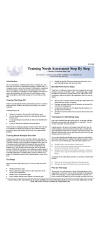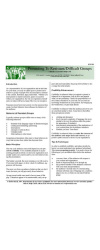By Lee Hopkins
Summary: There’s an intimate link between how you communicate and the conflicts you create or become a party to. Good communicators tend to experience less conflict in their lives. This articles maps out some communication related sources of conflict, particularly in team settings.
Did you know there are 5 types of communication that lead to conflict?
Let’s look at them…
Definition of ‘Conflict’
It helps if we first define what we mean by ‘conflict’
Conflict is an expressed struggle between at least two parties, both of whom perceive interference from the other towards achieving their goals
A conflict can only exist when both parties are aware of a disagreement
The importance of a team’s values to communication
There are negative team values that can actually sabotage good communication within a team. For example:
As long as I do a good job that’s all that matters to me
undermines team cohesiveness and co-operation.Problems are the result of other people’s mistakes
is also unhealthy.If someone ‘stuffs up’ it’s their problem
is really not helpful to anyone.
Such values induce competition, not co-operation and collaboration. These team values destroy teamwork!
Positive team values
There are 5 key values that aid co-operation and cohesiveness within a team:
We are all in this together
The performance of the team is seen as more important than individual performance. Note that blaming styles of communication lead to individual performance becoming the paramount object, resulting in little or no team work.No member is more important than another
When individuals consider themselves more important than another (‘superior communication’) then communication breaks down and competition takes over. But when everyone is seen as an equal, communication is open and there are high levels of co-operation and collaboration.Open, honest communication is essential
When you are thinking of a reply, instead of really listening to the other, you are engaging in ‘dishonest communication’. Similarly, when you see something done that is not acceptable but you ‘are polite’ and ignore it you are equally being dishonest with your communication. There is no room for dishonest communication in teams. Open and honest communication requires the use of listening and empathy. Listening to understand gives us the other person’s perspective—it allows us to hear their experience. Empathy reduces the need to judge the behaviours and beliefs of others. By listening and empathising we model open and honest communication.Everyone needs open access to information
Informatin facilitates collaboration and co-operation, and effective decision-making requires all the information. Decision-making always has an element of uncertainty attached to it, but having all the information available makes the decision-making easier.We all need to focus on the team’s goals, aims and mission
Without a clear and sustained focus minor distractions become major blockages.
The 5 types of negative communication that lead to conflict
Negative communication
We all know a ‘Negative Nigel/Nancy’ in every team—they exist and we find it near impossible to remove them. But constant negativity drains the other team members of enthusiasm, energy and self esteem. So Nigel and Nancy need to be confronted with their behaviour. This can best be achieved if all of the other team members individually feedback the effect of this behaviour on them. An ‘I message’ is the best approach for this—such as, “Every time I put forth a suggestion your negativity frustrates me and I find it hard to work with you.”Blaming communication
Blamers spray blame around, effectively stopping reflection and scrutiny of their performance and behaviour. However, their impact can be reduced by fostering a learning environment, as well as the use of ‘I messages’, peer pressure and individual feedback. Find out what the blamer’s issues are and try to address them one by one.Superior communication
‘Superiors’ frequently order people about, direct, advise and moralise. They are also very skilled at withholding information. Such behaviour sets up team members for frustration, resentment and sabotage. But ‘superiors’ and their behaviour can be addressed with individual assertiveness and ‘I messages’Dishonest communication
Dishonest communicators frequently fail to practice listening to understand and fail to display empathy. They also display circumlocutory communication—also known as ‘talking around the issue, not addressing it’. It’s kind of like casually wandering around the outside edge of a garden when what’s really required is to walk confidently through the middle of it. DIshonest communicators also often use royal or imperial ‘WE’ statements—as in, “We are not amused”, when in reality it is just they who are not amused. They also deliberately choose to not address unprofessional behaviour or behaviour that is damaging to the team and its mission. All of which leads to a dysfunctional team. But it can be addressed: everyone in the team must insist on open, honest communication, foster mutual respect, stop blaming, bullying and harassment.Selective communication
Selective communicators only tell what they think others need to know, hence keeping themselves in a position of power over the other team members. Such behaviour can be effectively addressed through assertive requests for having access to all the information.
Managing personal criticism
It is always discomforting to be on the receiving end of criticism. It hurts! Ouch!
But there are ways of managing your feelings when someone ‘has a go at you’.
1. Listen to understand
- Listen with your ears, your eyes and your senses
- Engage your mind and disengage your emotions—pack them up (remember, YOU are in control of what you think and feel)
- Be flexible and accommodate another view of the problem or issue
- Evaluate, discriminate and judge the decision you make
2. Don’t go into ‘defensive’ mode
3. Use an ‘I message’— such as, “When I am just simply criticised I feel angry and hurt and disregard the information. However, I would welcome constructive feedback.”
When you match consumer psychology with effective communicationstyles you get a powerful combination. Lee Hopkins can show youhow to communicate better for better business results. At Hopkins-Business-Communication-Training.com you can find thesecrets to communication success.






